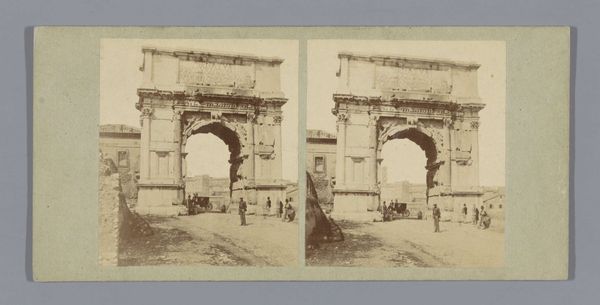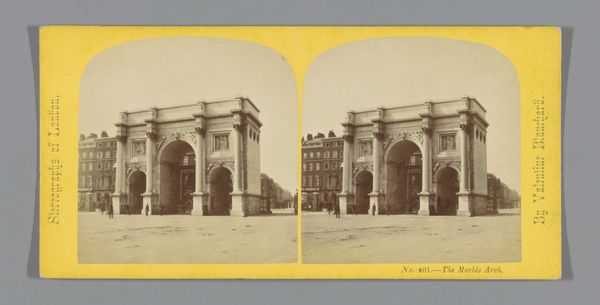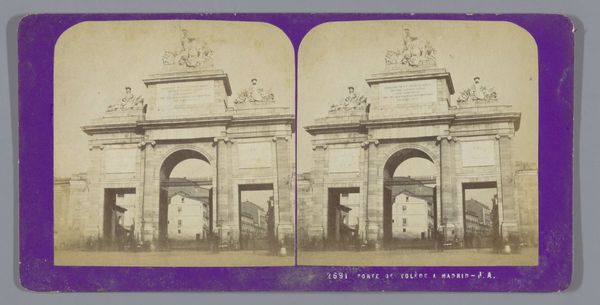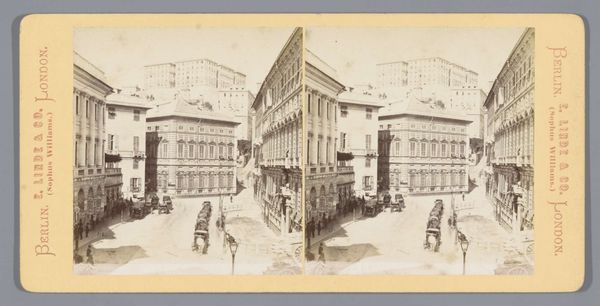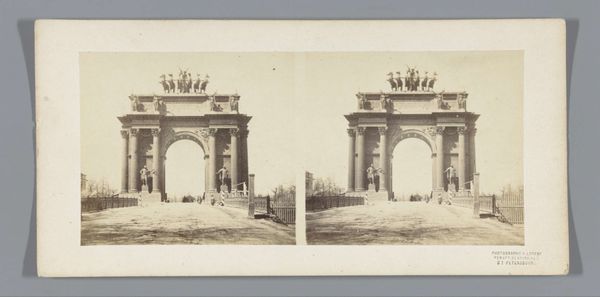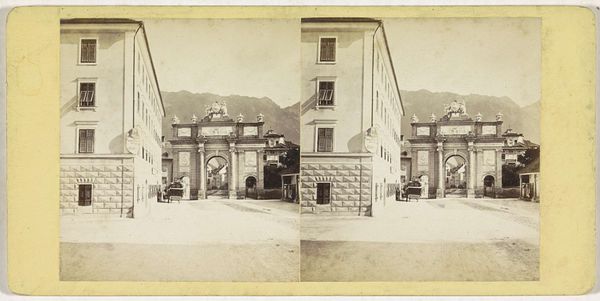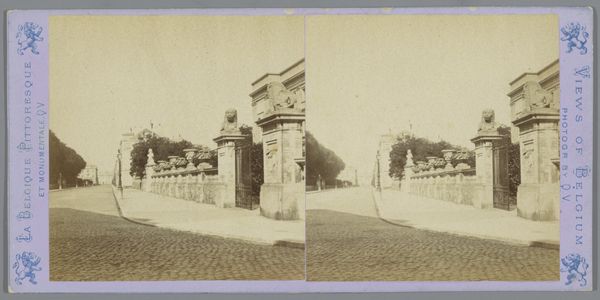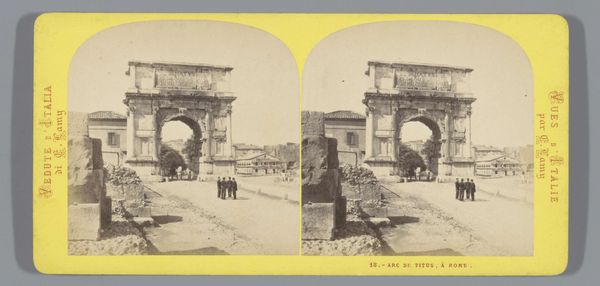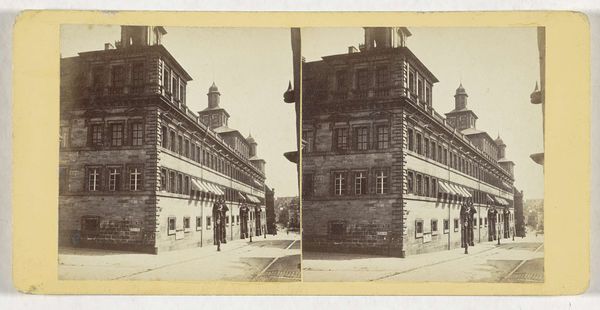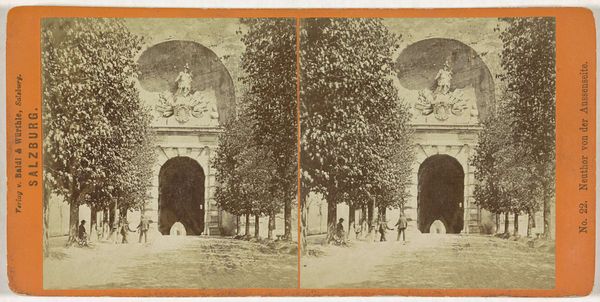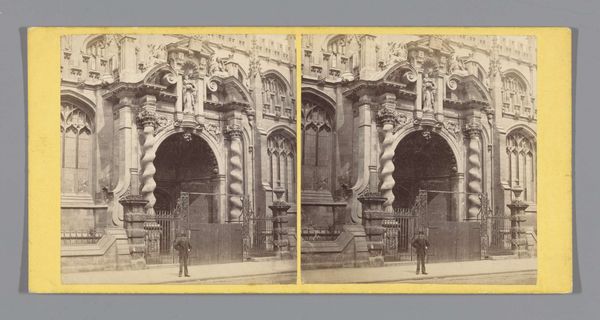
print, photography, gelatin-silver-print
# print
#
photography
#
coloured pencil
#
orientalism
#
gelatin-silver-print
#
cityscape
#
realism
Dimensions: height 87 mm, width 178 mm
Copyright: Rijks Museum: Open Domain
Editor: Here we have Johann Friedrich Stiehm’s "Noordzijde van de triomfboog in Innsbruck," a gelatin-silver print from sometime between 1868 and 1890. I'm struck by the framing, which repeats this triumphal arch twice in one photograph! What historical weight does the photograph carry, in your opinion? Curator: This stereoscopic image is interesting as a form of early tourism and city documentation. Triumphal arches themselves are intensely political. Erected initially by empires, then monarchies, to celebrate military victories and project power, Stiehm captures Innsbruck's arch at a time of shifting imperial dynamics. Editor: Shifting? Could you say more? Curator: Well, consider how photography itself, rapidly becoming more accessible, changes the nature of public monuments. Suddenly, images like this allowed wider circulation of state symbols, creating new forms of national or regional identity. Was Stiehm, do you think, merely documenting, or participating in constructing Tyrolean civic pride? Editor: That’s fascinating. The photograph as a political actor, not just a recorder. Do you think the choice to use the stereoscopic format also contributes something to that message? Curator: Absolutely. The added depth arguably reinforces the monumentality and permanence of the arch. Think about how these images would have been viewed – through a stereoscope, often in domestic settings, almost like bringing a piece of Innsbruck’s political landscape into the home. What assumptions do you think viewers brought to images like these at the time? Editor: I guess they saw progress, empire, the state, made accessible. But also maybe a bit staged, considering photography’s history. It feels less like a candid shot and more like a controlled presentation of power. Thanks, I never thought of these photographs carrying a message! Curator: Exactly! It encourages us to be critical viewers, aware of the context and intentions embedded within even seemingly straightforward depictions of cityscapes.
Comments
No comments
Be the first to comment and join the conversation on the ultimate creative platform.
